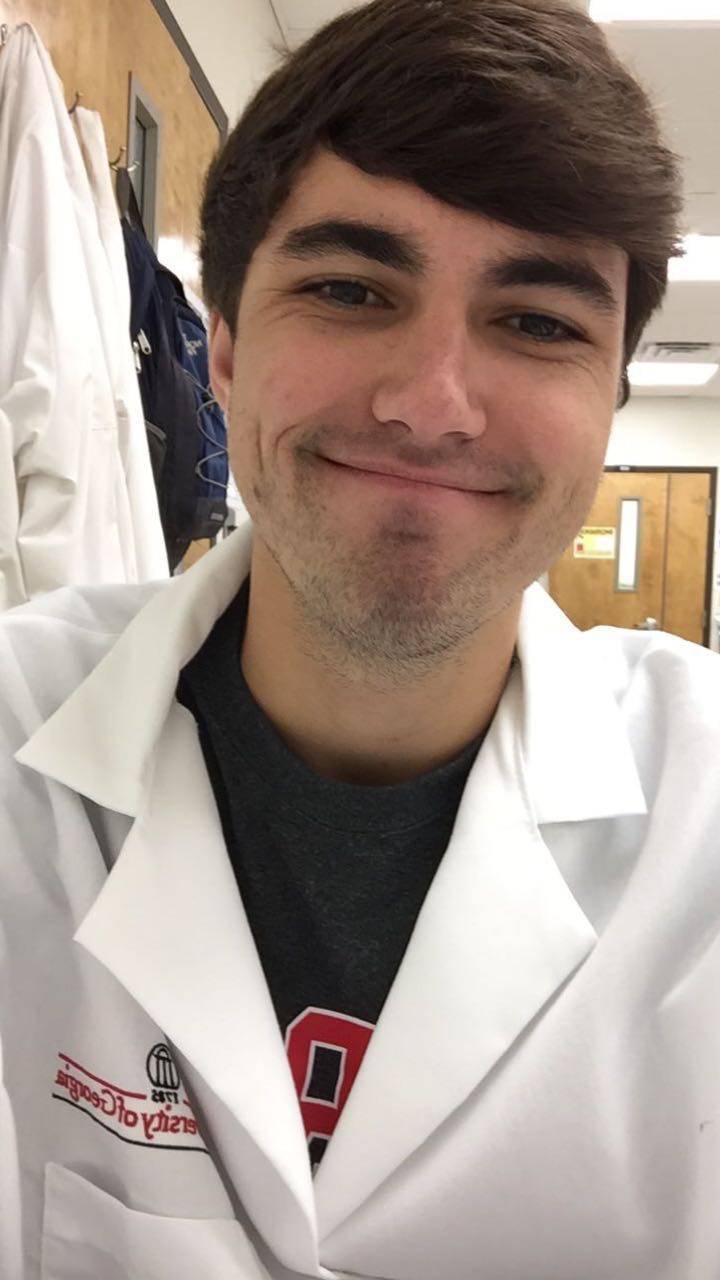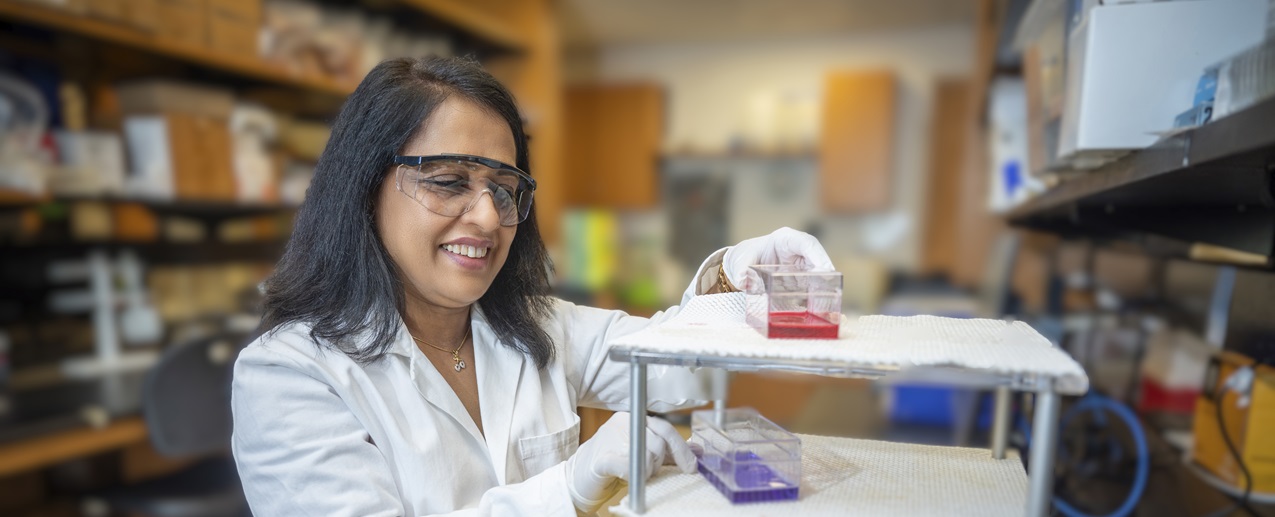
IL-6 signaling | Barrier dysfunction | Angiogenesis | VEGF signaling | Diabetic retinopathy | Dry eye disease | Translational research

Shruti Sharma, MS, PhD
Associate Professor
Center for Biotechnology & Genomic Medicine
James and Jean Culver Vision Discovery Institute
Department of Ophthalmology
Medical College of Georgia at Augusta University
706-721-6522
Office: CA-4139 | Lab: CA-4132A
Jump to: Research Interests Projects Funding & Teaching Media Articles & Publications Graduate Students & Staff
The Shruti Sharma Lab at Augusta University focuses on understanding the molecular mechanisms underlying ocular surface and retinal diseases, with particular emphasis on dry eye disease (DED) and diabetic retinopathy (DR). In DED, the lab utilizes both in vitro and in vivo models to investigate tear film instability, epithelial dysfunction, and chronic ocular surface inflammation. Tear fluid from patients is analyzed using advanced proteomic and glycomic approaches to identify disease-specific biomarkers and therapeutic targets. The lab has identified interleukin-6 (IL-6) trans-signaling as a novel therapeutic target in DR and investigates inflammatory and angiogenic pathways in endothelial and Müller glial cells, particularly the roles of IL-6 cis- and trans- balance and its effect on VEGF signaling. Preclinical studies utilizing sgp130Fc, a selective inhibitor of IL-6 trans-signaling, has shown decreased inflammation, oxidative stress, and retinal vascular damage.
IL-6 is a pleiotropic cytokine that possess both anti- and pro-inflammatory properties. Our lab found that inhibiting pro-inflammatory, IL-6 trans-signaling, attenuates inflammation, and helps prevent the vascular dysfunction in the retina that can lead to vision loss.
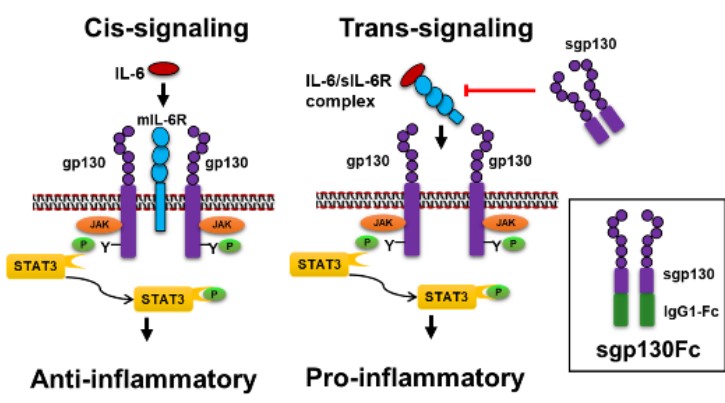
Our lab investigates the role of inflammation in DED, to find alternative therapeutic interventions. We center our work on understanding the mechanisms behind tear film instability and increased tear osmolarity, which are the major characteristics of DED.
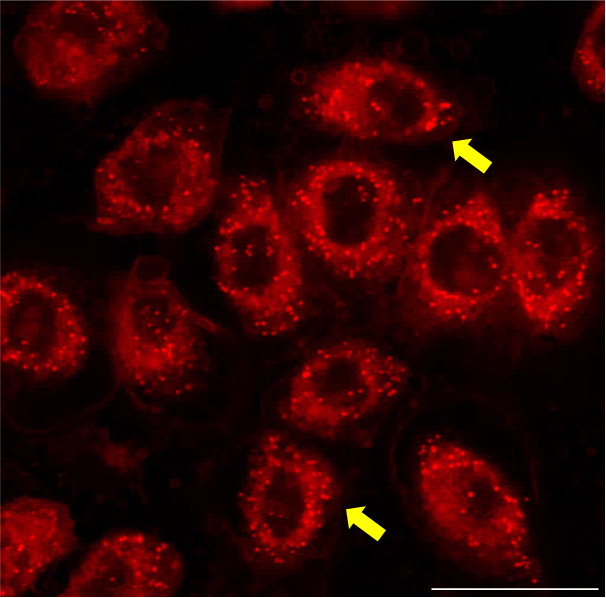
Nile red staining in hTCEpi cells
Our large collection of human tear samples allows us to identify DED tear biomarkers to further advance our search for potential therapeutic DED targets.
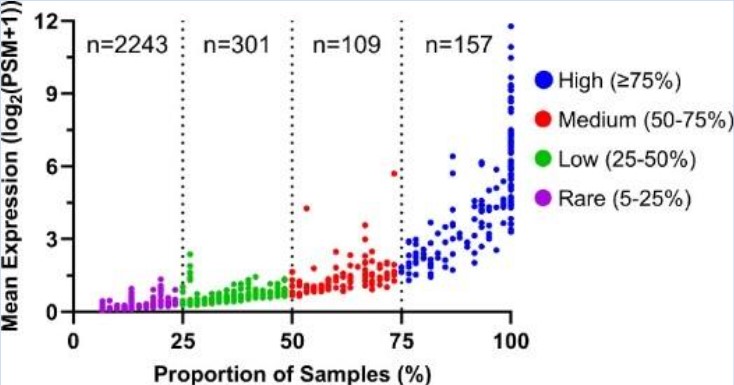
Proteins detected in human tear samples
Funding:
Teaching:

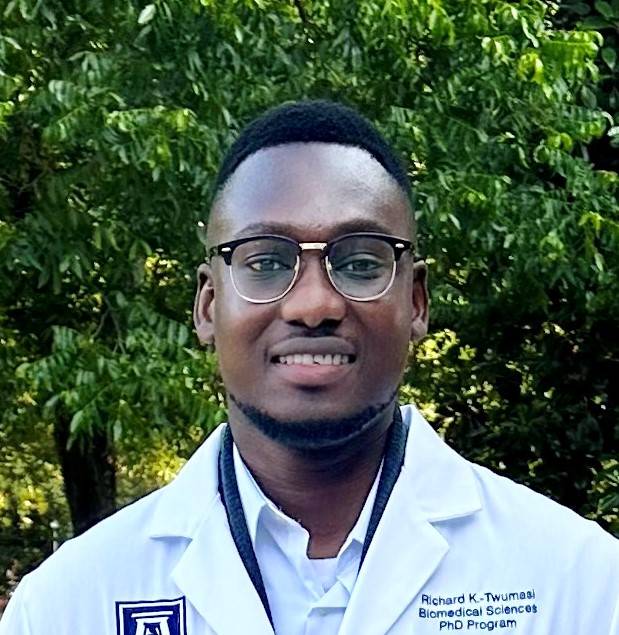
Richard Kontoh-Twumasi
706-721-3404

Graduated Students
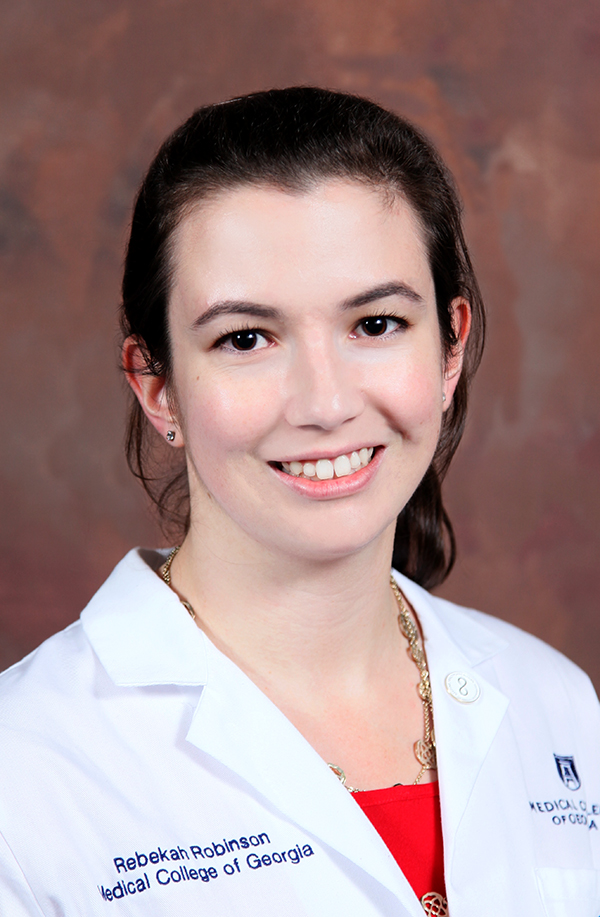
Rebekah Robinson

Arthur Miller, MD
Medical Residents & Students


Neel Edupuganti
706-731-3404
Laboratory Staff
